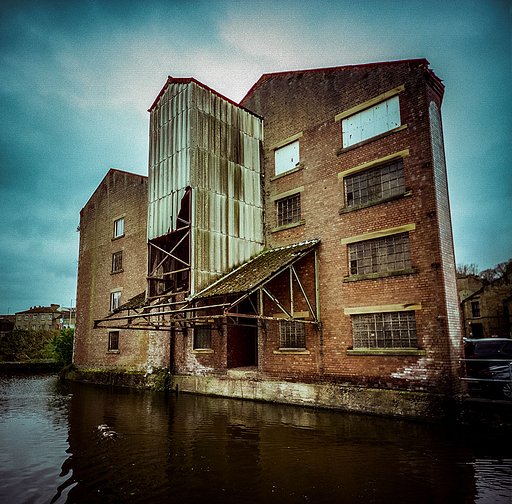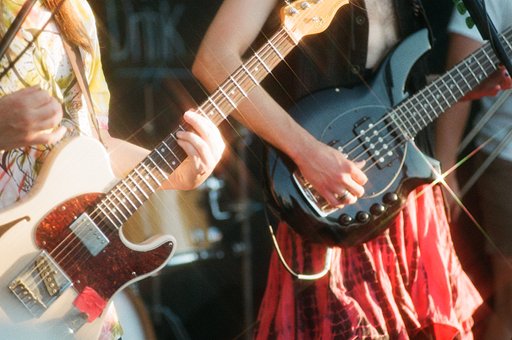Photographer Michelle Bates Shoots With Holga
4 20 Share TweetMichelle Bates is a passionate photographer that mainly works with the Holga. We asked her some questions about her love of analogue photography, so take a moment to learn about her artistic path and see her impressive and beautiful photos.

Tell us something about yourself.
I studied science in school, and only got into photography after I graduated from university. My movement into the arts continued when I moved to Seattle and got involved with community arts groups that create parades, festivals and other fun events. I also love road trips!
How/When did you begin taking pictures? What was your first camera?
My first camera was a Canon Sure Shot 35mm point ‘n’ shoot I got when I was 13. My first SLR was a manual Ricoh I got in college, when I first started trying to figure out darkroom work. When I was 21 I went to the Maine Photographic Workshops (now Maine Media Workshops) and discovered the Holga.
Describe your style in photography. What are your usual subjects and themes?
A photo editor once compared my different bodies of work, saying that what tied them together was my “quirky sensibility.” I’ll buy that! Not all my work is quirky, but much of it is, including my performance photography, where my subjects tend to be circus performers, vaudevillians, and acrobats. My vision through the Holga takes advantage of the camera’s vignetting and is further accentuated by my cardboard negative carrier, which gives a ragged rounded edge to the photos.
I’ve done everything from my own fine art work, to imagery for weekly newspapers, CD covers, weddings and performers.
Early on with my Holgas, I tended towards odd subjects like carnivals, animals (real and fake), etc. I will always love those subjects, as many other photographers working with low-tech cameras do.
More recently, I’ve expanded my artistic vocabulary, exploring more serious or neutral topics through my plastic lens. This led to a series called “Urban Oases,” which explores natural elements in urban environments. I’ve also shown series of pure nature photographs, which, for some reason, often focus on dead trees.
In 2008, while on a visit to Israel, I was told to go to a certain place, somewhat out of the way. I eventually got there, to discover a field full of gorgeous, but decaying, parade floats. Spending a hot sunny afternoon there photographing these characters in a unique, temporary state felt to me like the ultimate combination of my quirky photographs, and an experience in 2000 of photographing a friend’s house after a fire, along with the dead tree photos: the last two also capturing a temporary state of transformation and finding beauty in destruction.
Tell us about your book, “Plastic Cameras: Toying with Creativity”?
This book, first published in 2006, and updated in 2010, is a comprehensive guide to the world of toy cameras, starting from 1968 to when I finished putting each version together. It focuses on the Holga, but includes many other cameras, although Lomography introduces new ones all the time, so I can’t keep up!
It begins with a history of the genre, then showcases 30+ portfolios of top photographers making series of work with plastic cameras, historically up until now. There are many chapters discussing how to use the cameras, some specific to the Holga, and many general, from basics to advanced techniques. There is also information about how to process film and what to do with negatives, including darkroom printing, scanning, lab prints, etc. And finally, there are extensive resources listing books, magazines, retailers, low-tech photography themed websites, and the sites of the photographers in the book and others.

We all have our idols, which photographers do you look up to? Who or what influences your photographic style?
I love the work of Abelardo Morell, both aesthetically and for his explorations of different types of subjects and methods of image-making. And the gorgeous prints and compassionate vision of Sebastaio Salgado.
In the plastic camera world, of course everyone whose work I publish or show in presentations somehow inspires me. But there are images by Thomas Alleman and Ted Orland that I particularly love. Thomas, along with Brigitte Grignet, has a strong and consistent vision that makes me look forward to their newest work.
If you could take anyone’s portrait using film, can be living or dead, who (would it be), which (camera would you use), and why?
I’m not sure, but here’s one of my favorite portraits, take on the Orkney Islands in 1993.

Analogue vs. Digital. What makes analogue/film photography more special than digital?
I recently read someone’s blog about why he switched from digital to film for his street photography. The idea that stuck with me most is that with film, after you press the shutter, you’re thinking about the next shot, not the one you just took (which is of course irresistible to look at). After you take a film photo, the image is there, but it’s latent, and there’s nothing you can do with it at the time. It’s freeing to be able to look up, look around, and see what’s next. Also, the cameras are so simple that there is more space to look and see, instead of fussing with camera adjustments. Because film is precious, we pay greater attention to what we shoot. And we are also forced to learn from previous experience, since you can’t cheat and see what the photo looks like right after you take it!
Do you own Lomography cameras? Which is your favourite? / Which Lomographic camera would you like to have and why?
I have a room full of plastic cameras! Since I’ve been using them for over 20 years, my muse is definitely the Holga. My favorite new variation on the old standard is the Wide Pinhole Holga, which is the most compact 6×12 panoramic camera you could even make.
I think the Diana Mini is adorable, and I love the Fuji Instax instant back for the Diana+.
I’m intrigued by the Sprocket Rocket and the Spinner, but haven’t had a chance to try them yet. I must be on a panoramic kick…

A lot of people are into photography today, what would you say to them to inspire them more?
A technique I started using before the digital age was to make lots of prints of images that I like, then occasionally spread everything out around me so I can see all my work. That way, I can see what images inspire me, how they relate to one another, and find the seed of series that I can continue to work on.
Aside from blog, do you have other creative online/offline projects? If none, what other creative pursuits do you wish you could explore?
Outside of my Holga work, I spend a lot of time photographing performers, especially live shows of circus, vaudeville, and variety shows. I mostly use digital for this, but I love the exercise in predicting moments, and creating compositions with moving subjects and constantly changing lights. It’s a very different type of image-making, but I love the subjects and the communities. I’ve also used the Holga with parades and events for almost 20 years.
I’ve also recently learned to play the clarinet so I can actually play in one of my favorite bands, after photographing them for many years, and of course I also take my Holgas traveling with me!
Learn more about Michelle Bates on her website.
written by gabysalas on 2012-06-26 #art #lifestyle #pinhole #analogue-photography #photographer #holga #analogue-cameras #michelle-bates



























4 Comments